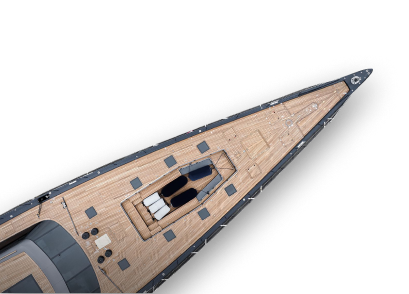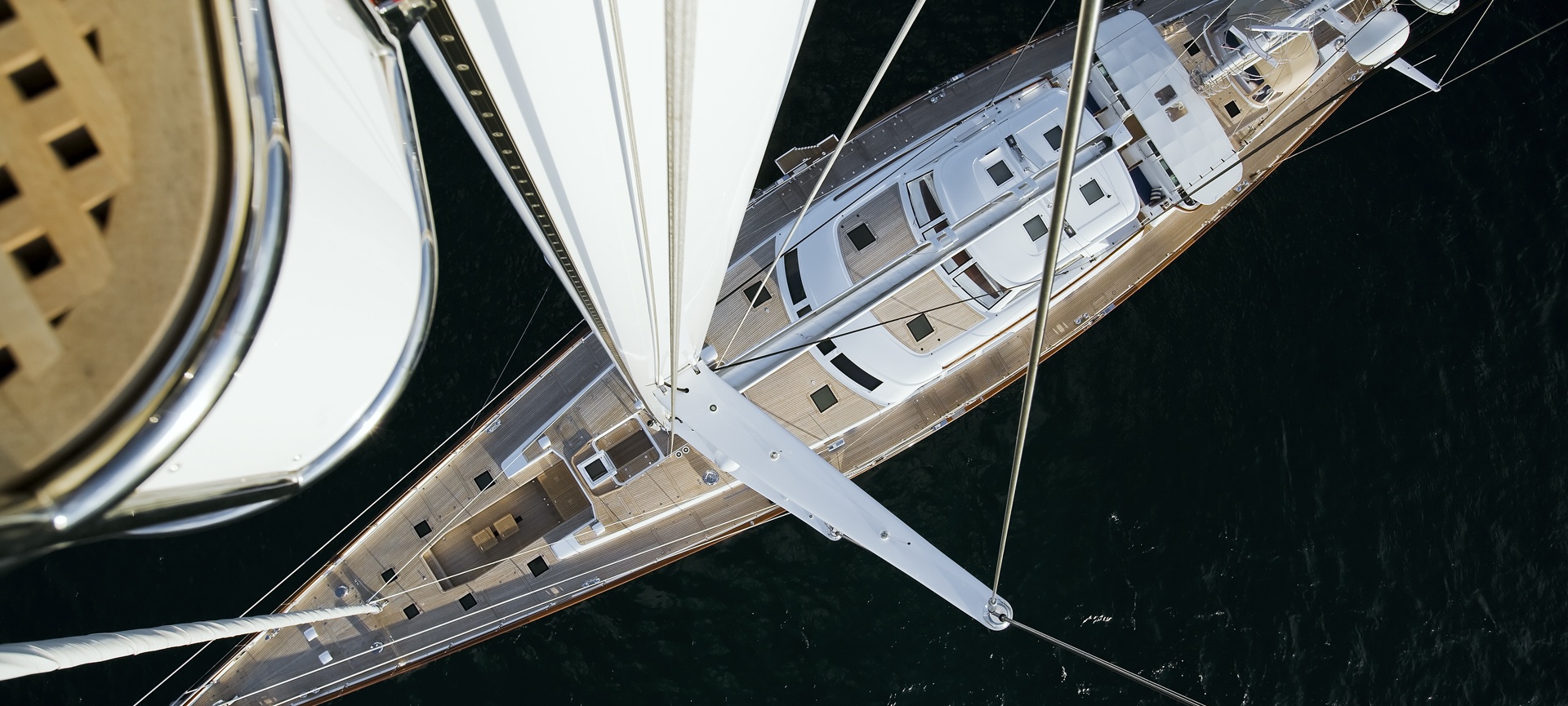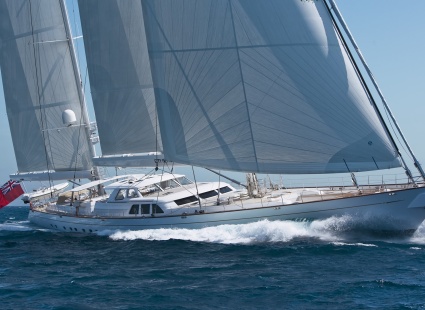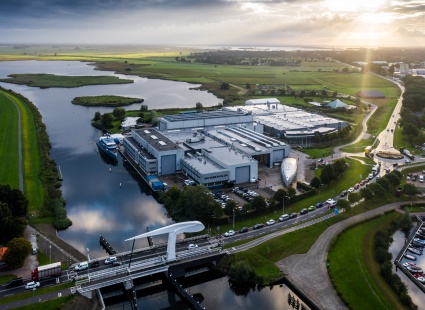An Ethereal World
The deployment of new technologies has been part of the shipyard's story since it was founded in 1884. Whether it was the introduction of galvanised metal fittings, the first mechanical pumps, grappling with the internal combustion engine for the first time or working out how synthetic sails compare with canvas when setting up a rig, each development must have led to uncertainty, frustration and more than a few mistakes before something emerged that was a big step forward from previous practice.
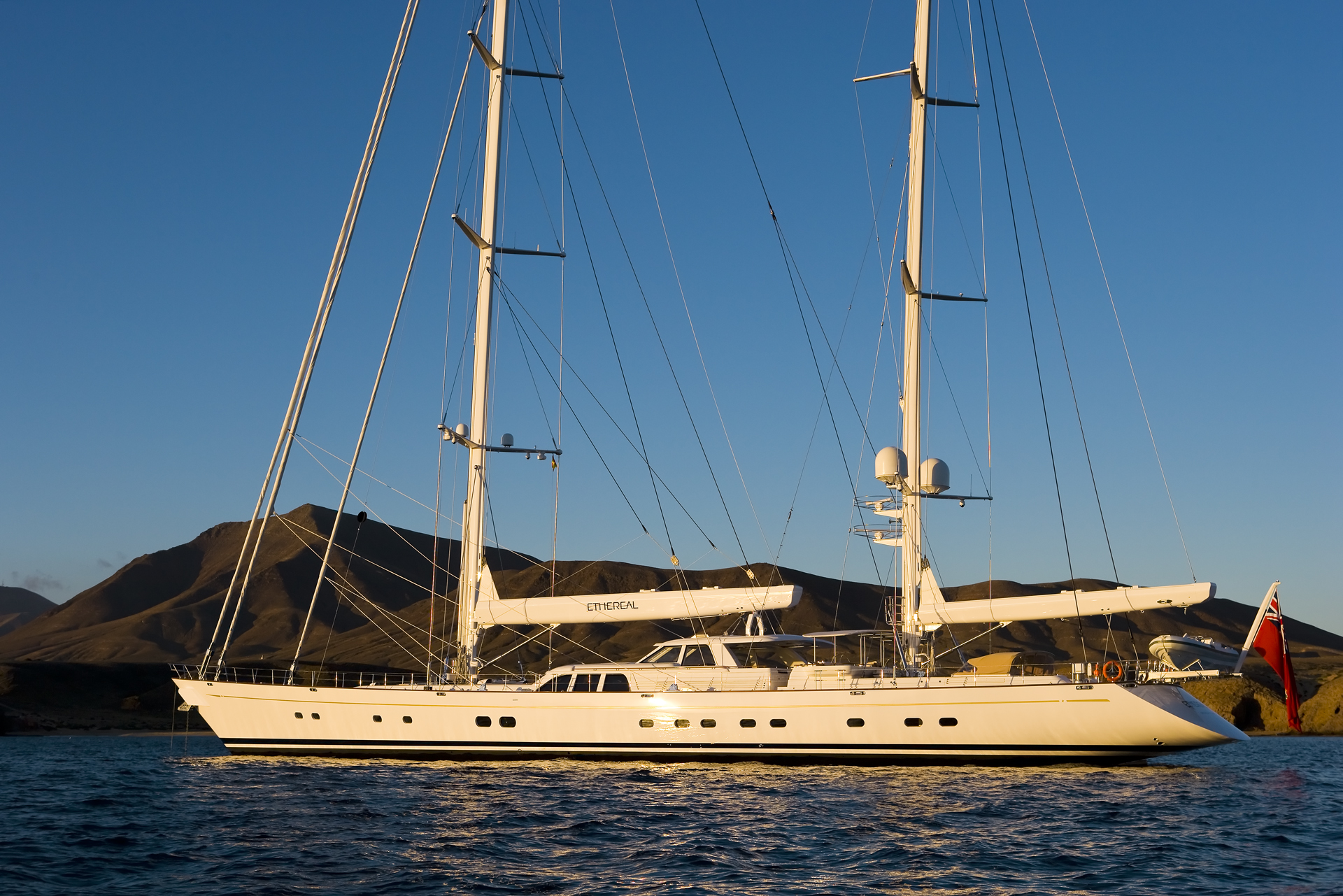
Pioneering new frontiers of technology
When Bill Joy placed his order with Royal Huisman for what would become the 58m / 190ft ketch Ethereal, the shipyard team may perhaps have assumed, from the initial brief, that their principal challenge would be to create a significantly up-scaled version of the 43m / 143ft ketch Juliet, in good time and, of course, to an exacting standard. If so, it was not long before they were disabused of that notion. Their client had taken the computer world by storm, not only because he had created the Berkeley UNIX and cofounded Sun Microsystems, but also because he had a restless curiosity and driving intellectual energy that was now going to be engaged wholeheartedly in this yacht-building project.
Energy efficiency and operational sustainability were just two of a very long list of attributes against which this yacht must be able to place a tick firmly in the box. The challenge inherent in the seemingly reasonable request for energy efficiency must be seen in the context that the modern superyacht is an incredibly hungry devourer of resources. As well as energy to drive the propulsion and hydraulic systems, additional energy is required for heating, ventilating and air-conditioning, for a high consumption galley, fridges, freezers and washing machines, for entertainment systems, lighting, navigation, radar, alarm and monitoring systems – the list is almost endless. Bill Joy and wife Shannon were determined to own an energy-efficient yacht, yet did not see why this intention should be at odds with an exceptional level of amenity onboard (including a full-sized sauna) – the solutions were all just a matter of application, commitment and ingenuity.
With the owner providing such an extraordinary level of stimulus, challenge and lateral thinking, the yard team was galvanised into raising its game to new heights. Almost no aspect of this build and its systems escaped Joy’s questions: “Why do you do it this way?” and “Has anyone ever considered …?” or “Could we maybe try …?”
For someone who self-professedly knew nothing about yacht building (at the outset), Bill Joy showed an extraordinary ability to learn, analyse and question. His desire for energy efficiency derived in part from a wish to run as environmentally clean and as operationally cost-efficient a boat as he might, but there were other factors. For one thing, it made sense to “future-proof” his substantial investment in Ethereal. For another, he wanted to be able to cruise with friends and family to remote destinations for extended periods: the greater the energy efficiency, the longer he could sustain independent operation in such places.
Technological conventions were robustly challenged throughout the development of Ethereal, but the focus here is one particular area of technology: hybrid propulsion and the related systems for energy generation, conservation and management that eventually came out of this stimulating project.
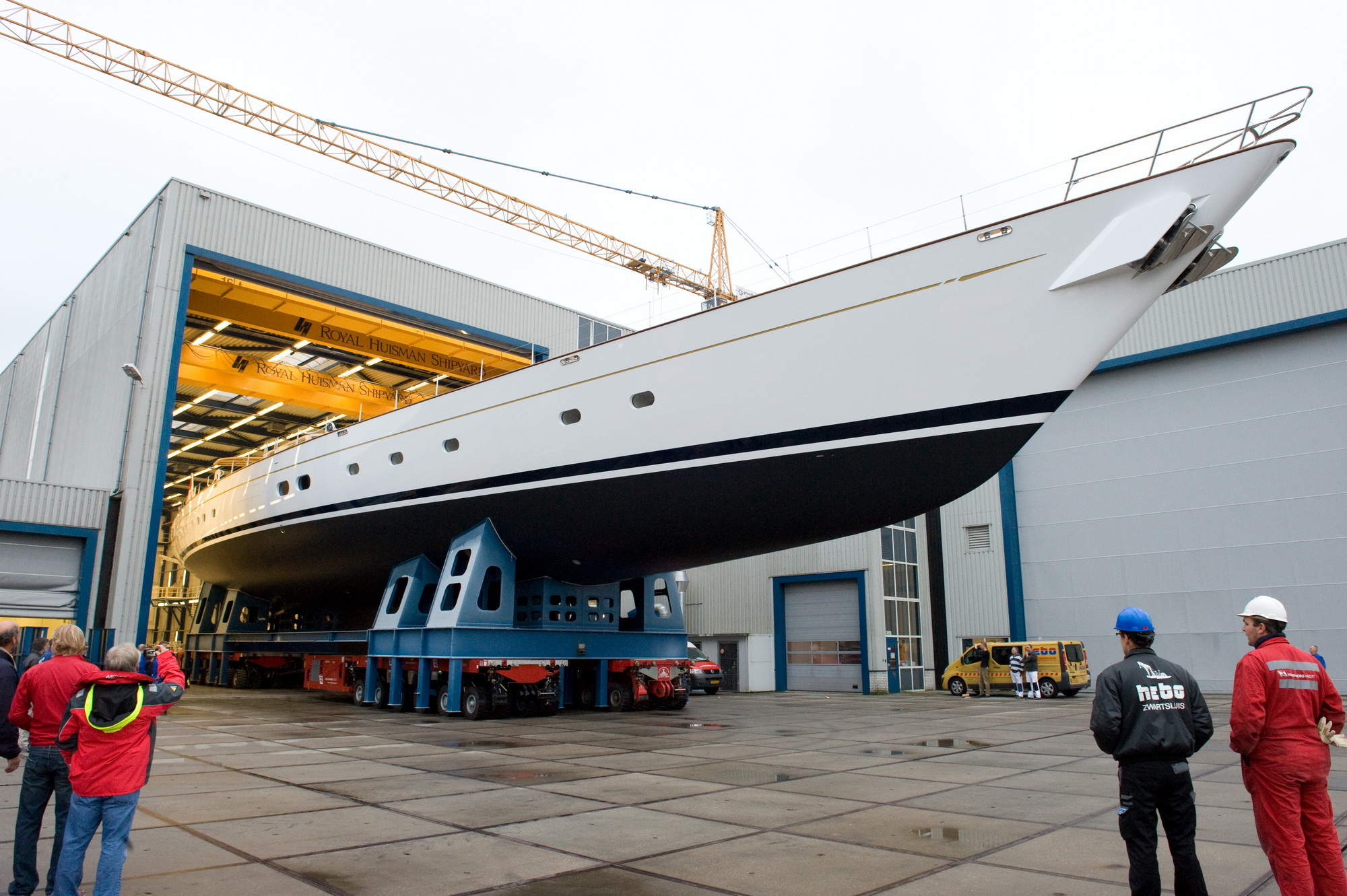
Ethereal, the world's first hybrid superyacht, is launched in 2008
In the format finally created for Ethereal, there were four key elements: two Caterpillar engines as main propulsion units; the shaft generators; the diesel generators; and the 400kWh lithium iron phosphate (LiFePO4) battery bank – the first ever to be installed on a yacht. The benefits are certainly impressive.
Under power from a main engine, the shaft generator delivers sufficient electrical power to meet the needs of the main board and household loads, obviating the requirement to run an additional generator. At anchor, or under sail alone, the lithium-iron phosphate battery bank has sufficient stored power to allow Ethereal to operate in “stealth mode” – domestic services can be run, anchors weighed and sails hoisted without resort to the engines or main generators.
Furthermore – and although Ethereal’s two engines provide a high level of redundancy – the shaft generators can be operated in reverse mode as electric motors powered by either a gen-set or even the battery bank to provide two very innovative “get you home” propulsion options. And here’s another feature from this extraordinarily flexible set-up: under sail, drag rotation of a propeller will generate 20kW through the shaft generators, while giving up only about 1 knot of boat speed. With a theoretical hull speed of 16 knots, this is not a serious loss.
Just the beginning
Further benefits include the requirement for generators of only 90kW instead of the 140kW normally installed on a yacht of this size, and without resort to energy wasting load banks. (In fact, only one generator is required operationally, buffered by the battery bank; again, there is a high level of redundancy on this yacht.) All this contributes to the desired fuel-efficiency as well as lower maintenance and less down-time for the generators.
Not to be ignored, if you are the owner or have the good fortune to be a guest aboard Ethereal, is the fact that this large and luxurious yacht can sit serenely in a remote anchorage, in silent mode, allowing you to savour the beauty and tranquillity of the scene without any sound, vibration or exhaust gases from a generator – despite the fact that lights, air conditioning and entertainment are all fully operational.
All the elements of this hybrid system were extensively run in “dry mode” at Royal Huisman during construction to ensure the efficacy of something that had never before been attempted on a luxury yacht. What became clear was that, despite the leading-edge status accorded by some commentators to this technology, Bill Joy and the team at the yard concluded that they were just scratching at the surface compared with what is still to come. Ethereal is already configured to enable the retro-fitting of a fuel cell in place of a generator when that technology has advanced a little further.
It will be fascinating to observe future developments.
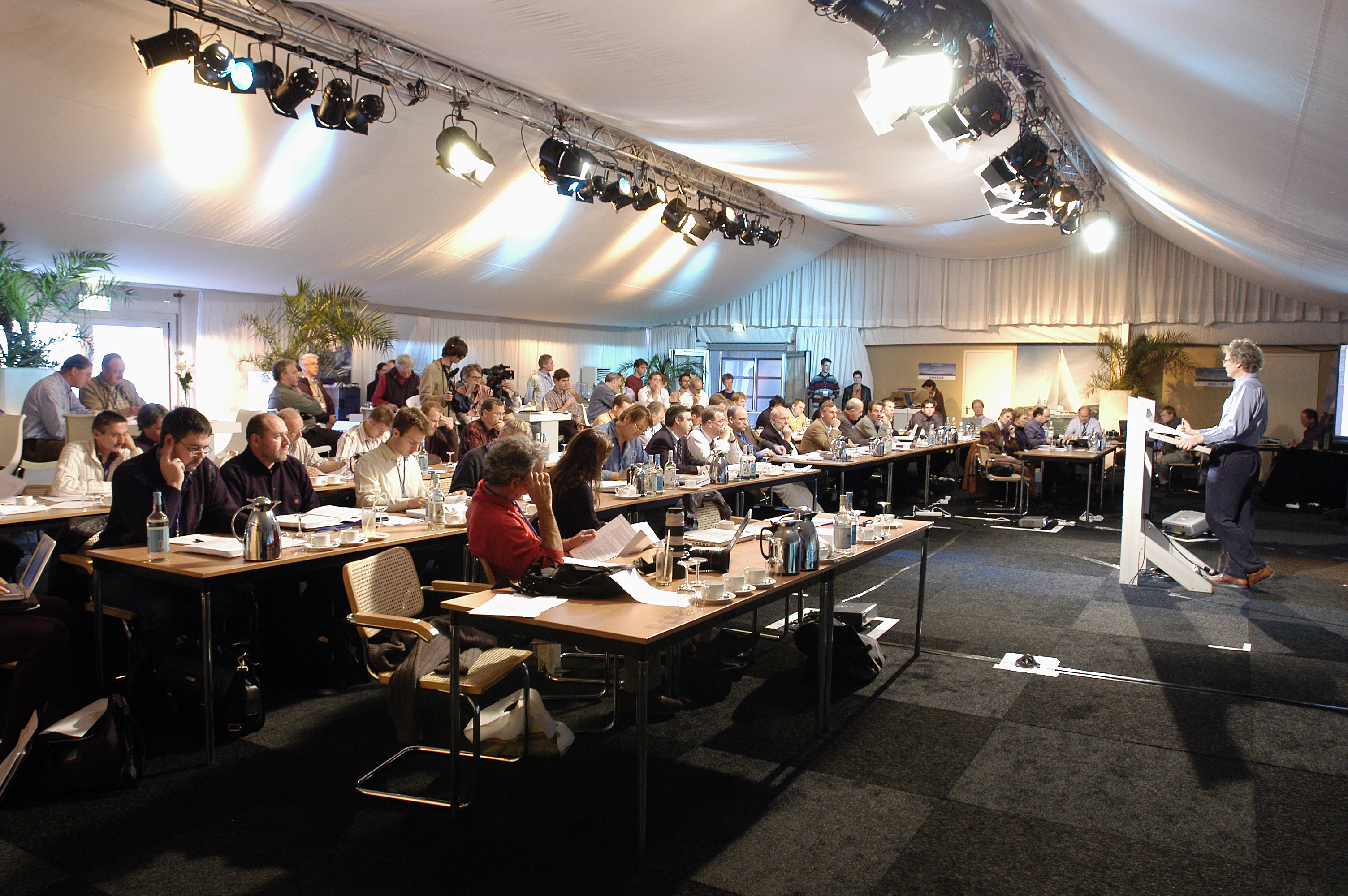
Bill Joy in full swing during the three day “Charette” for the Ethereal project in Vollenhove.
Bill Joy, Ethereal's owner and new frontiers pioneer
Custom yacht building offers a shipyard like Royal Huisman fascinating encounters with exceptional individuals whose vision it must seek to fulfil. Few owners can have been more fascinating, exceptional or challenging than Bill Joy. Part of the magic of this digital age has been the ability to connect a number of computers in a network and share information. The first Internet was clumsy and limited until, in 1984, the University of California at Berkeley released a new version of UNIX that became the backbone of the modern Internet. It was designed by Bill Joy. He went on to co-found Sun Microsystems, where he designed and, in 1995, unveiled another programming language, Java. By harnessing the power of the Internet, Java plays a major role in bringing the web to life and so has been integral to the development of Internet business. Joy has forty-four patents issued or in progress, is a fellow of the American Academy of Arts and Sciences, and a member of the National Academy of Engineering and the Computer Museum Industry Hall of Fame. Fortune magazine has called him the “Edison of the Internet”. He received the University of California’s Alumni Society Medal, its highest honour, in 2000.
“My method is to look at something that seems like a good idea and assume it’s true.”
True to character, Bill Joy launched his Ethereal project at Royal Huisman’s Vollenhove offices by holding a “Charette” – a three-day symposium attended by the world’s leading academics in all the disciplines that might have any conceivable bearing on his project. Though he and his wife Shannon live very private lives, Bill Joy allows the use of his name where it has the potential to stimulate others to come forward with creative, thought-provoking ideas.
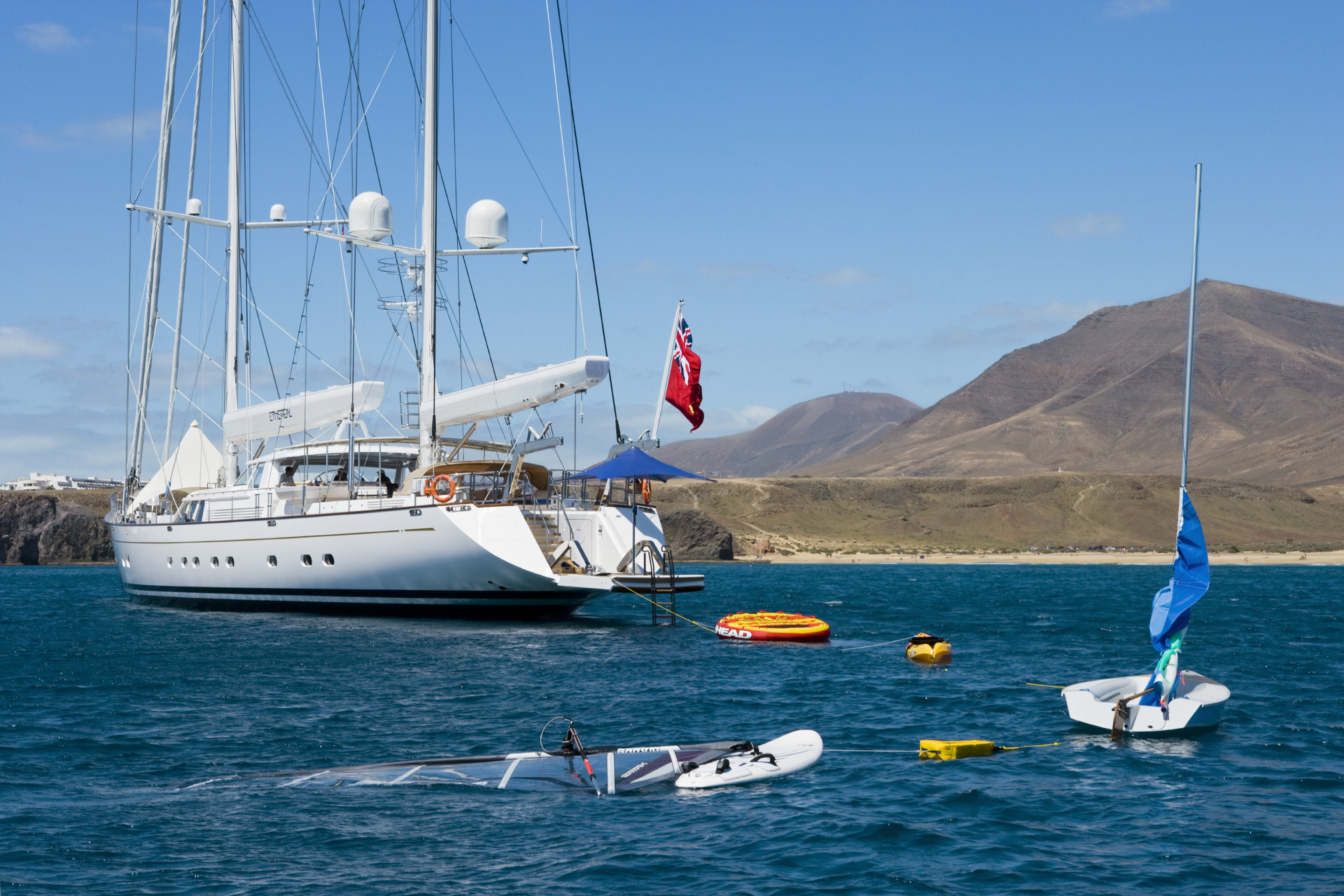
After an exceptional journey of innovation and development at the Royal Huisman shipyard, the graceful 58m / 190ft Ron Holland designed ketch Ethereal, with interior and exterior styling by Pieter Beeldsnijder, has begun the serious voyaging for which she was created. After completing sail trials at Harlingen earlier in the year and a fast, highly successful shakedown passage to Vigo in Spain, Ethereal headed south-west for the Canaries. Returning to Europe, she has covered many Mediterranean sea miles this summer on behalf of her owners and their guests, as well as offering a taste of “the Ethereal World” to yachting journalists in Barcelona. Her appearance at the 2009 Monaco Yacht Show – a centrepiece of Royal Huisman’s presence there – has enabled invited guests to view for themselves the impressive combination of technologically advanced systems with the relaxed yet sophisticated lifestyle experience offered by this extraordinary detailed yacht.
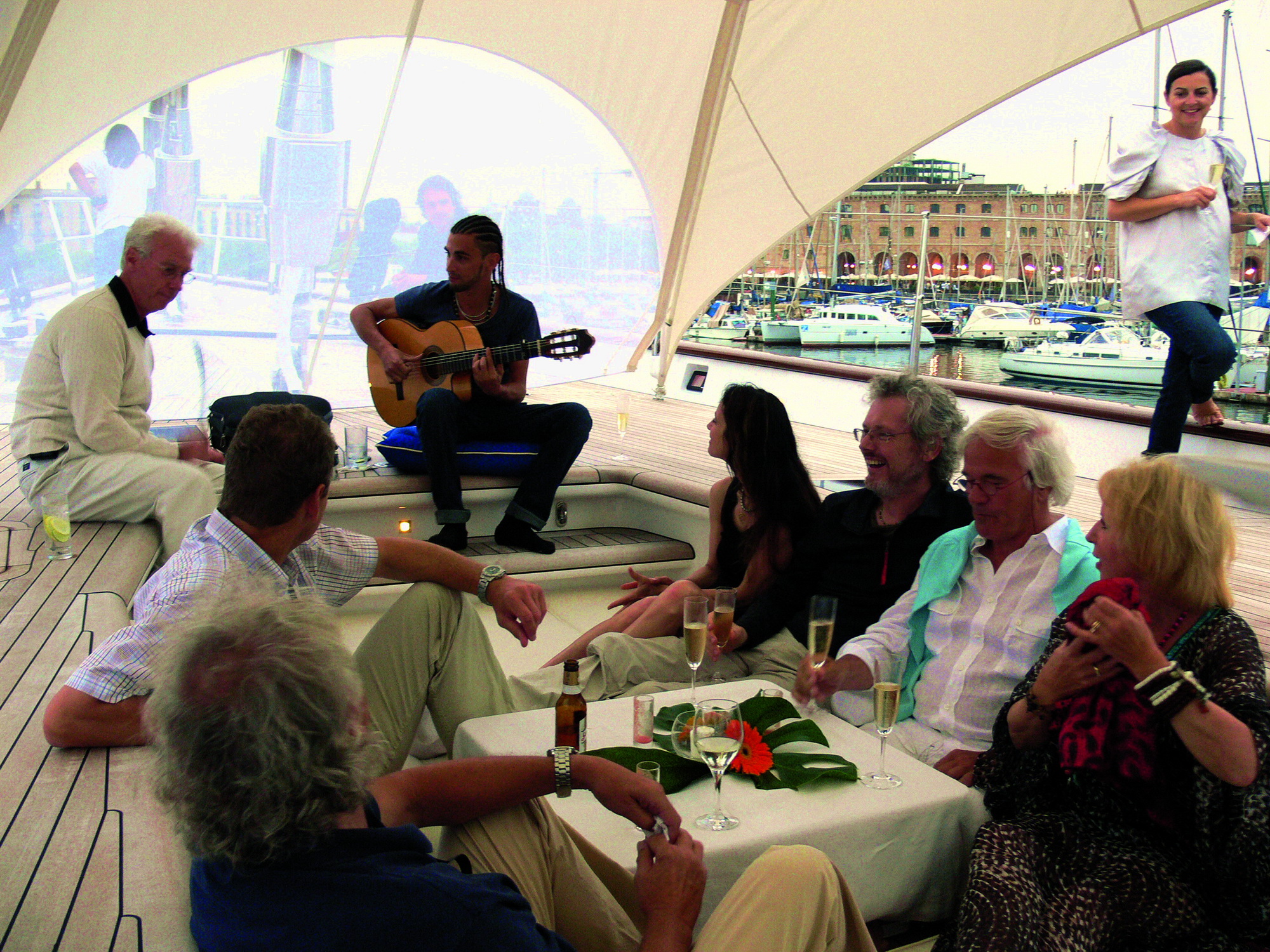
A Moroccan Tent can be set up on Ethereal's foredeck. Owners Bill and Shannon Joy share the occasion with naval architect Ron Holland, designer Pieter Beeldsnijder and yachting journalists during Royal Huisman's press reception in Barcelona.
A private island, a floating lab
When owners Bill & Shannon Joy decided to build Ethereal they were inspired, first, by a great admiration for the Royal Huisman-built 43.58m/ 142.98ft ketch Juliet – also created together with Ron Holland and Pieter Beeldsnijder; and, second, by their desire to create “a private island” offering their family and guests every comfort and amenity, yet conceived and operated to deliver these in the most enlightened and progressive manner to minimize environmental impact.
To achieve these ends the project became, as Bill Joy described it, “a floating lab”. Few off-the-shelf technologies were available to meet the objectives of long range sustainability of operations, energy efficiency, flexible energy management, reduced operational cost and lower carbon footprint. So owner and shipyard worked together with some of the world’s finest specialists to develop solutions. These are not – and never can be – the ultimate solutions; they are steps along a road. But these steps take Ethereal further down that road than any private yacht built to date – with fascinating consequences for those who sail her…
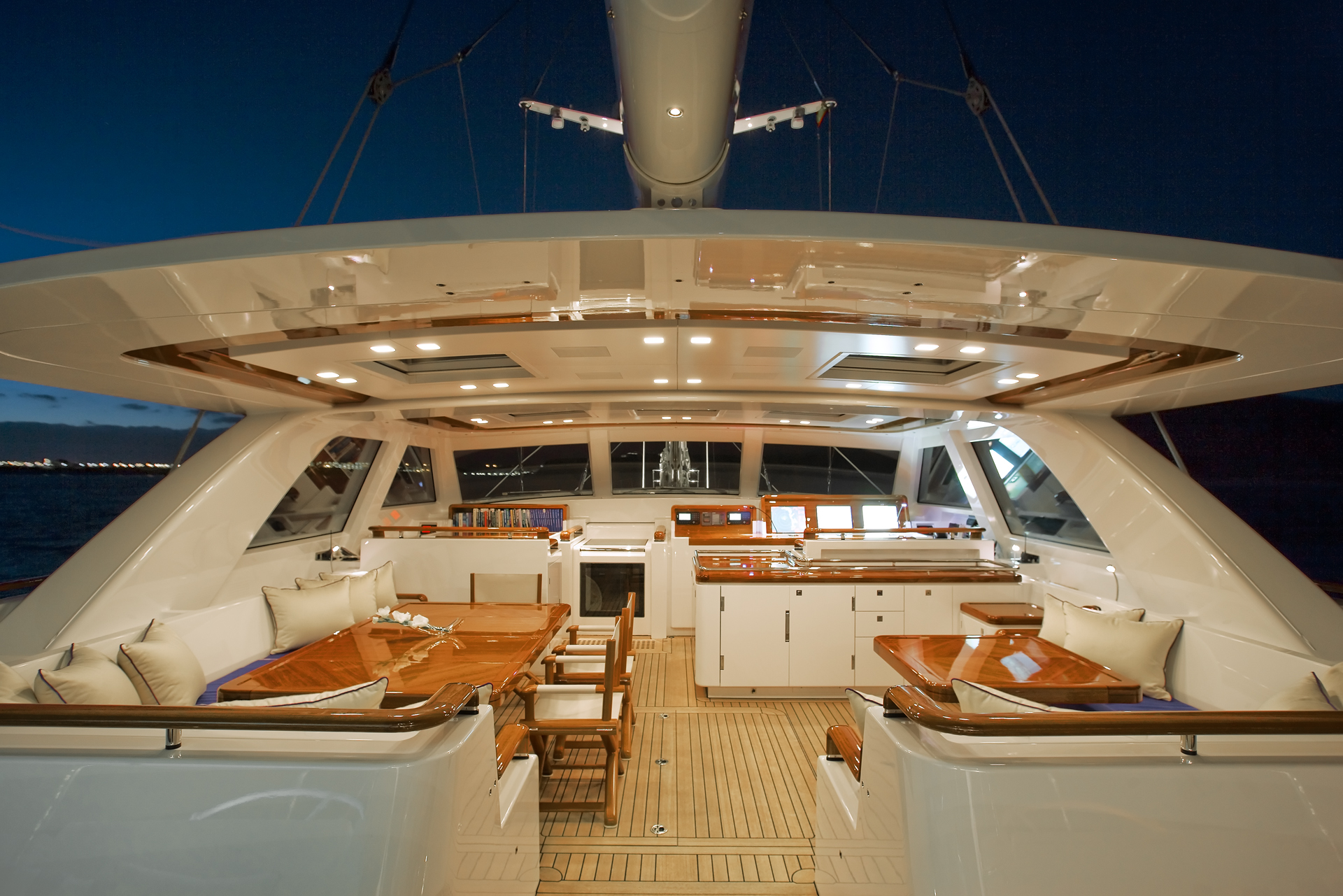
Ambience and tranquillity
Step below decks on Ethereal and you cannot help but be aware of the calm and the quiet – the sheer tranquillity that immerses you – no matter what is occurring operationally on the boat. The entire living area is cocooned, top, bottom and sides, in high-tech insulation materials that ensure a comfortable and stable air temperature without the need for heavy heating or cooling loads – wherever in the world the yacht might be. Noise and vibration, already substantially managed at source, is yet further distanced from the accommodation. The light is easy on the eye (and on the furnishings) because light-switchable glass in the hatches screens infrared light as required for the time of day and the strength of the sun. Switch on some dimmable interior lighting. You’ll be surprised by the warm ambience created, especially when you know that the entire system uses mouldbreaking LED technology. (Who said LED lighting can only produce a cold, white light that cannot be dimmed?) These facilities – and a great deal more – are operated by small touchscreens using an iPhone-inspired interface in each cabin.
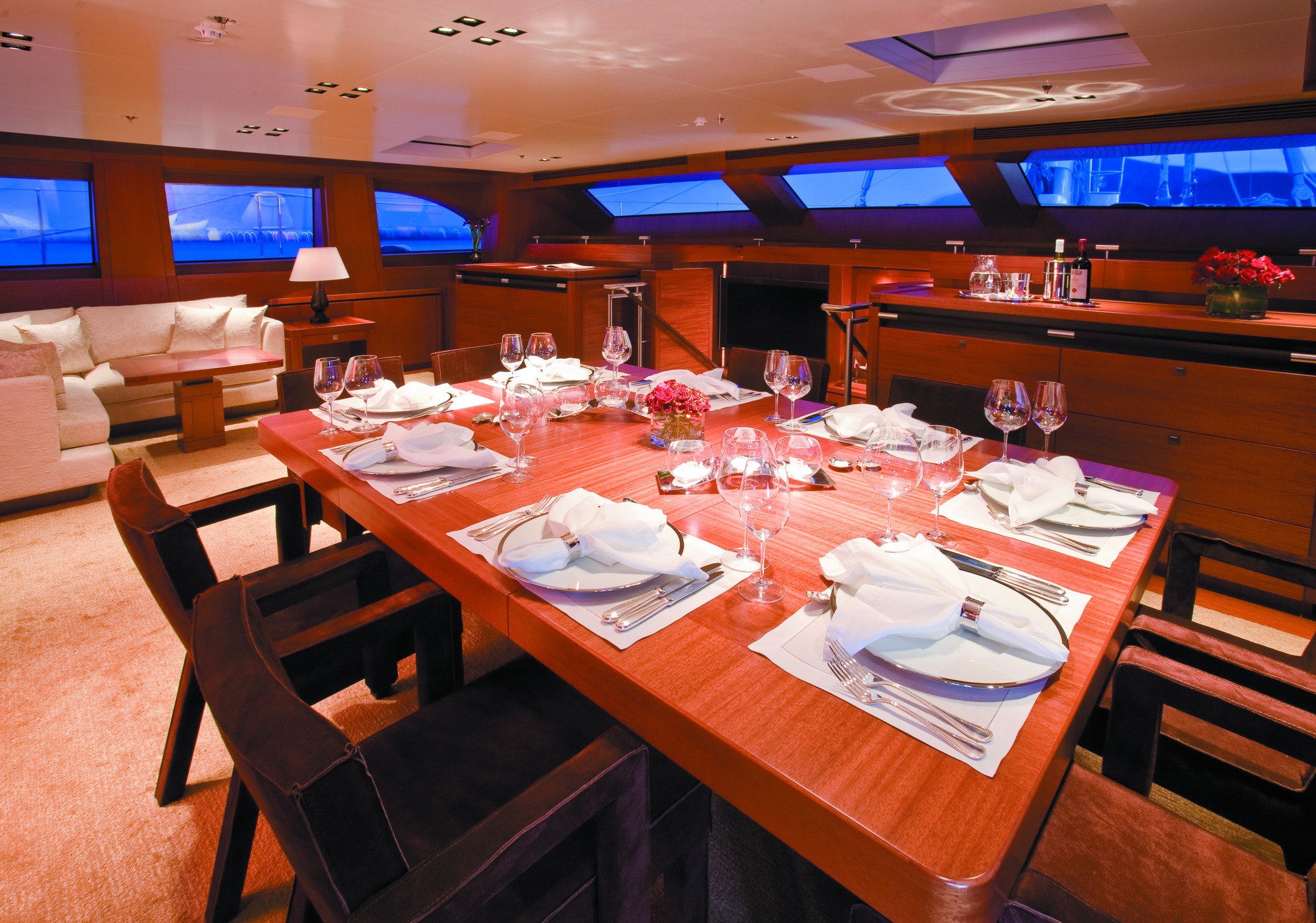
“...you don’t need to put any art on these boats, the boat itself is the art”
Space, style and amenity
Ethereal’s owners were determined to create the “perfect mobile gathering place for family and friends” and there can be no doubt this has been achieved, with open, relaxed areas that flow from one to another, complemented by smaller, more intimate areas, when privacy or seclusion are preferred. Clutter has been avoided: “We prefer Zen to ornate” comments Bill Joy, adding “you don’t have to put any art on these boats, the boat itself is the art.” He notes, however, that the yacht does feature beautiful woodwork: “When you go to Royal Huisman, you would be foolish not to let them express all their skill”. Descending from the subtly proportioned ‘al fresco’ teak trimmed pilothouse one enters a light and very airy upper salon. With an atmosphere of easy comfort enhanced by natural materials and panoramic views, this incredibly spacious area is subtly subdivided.
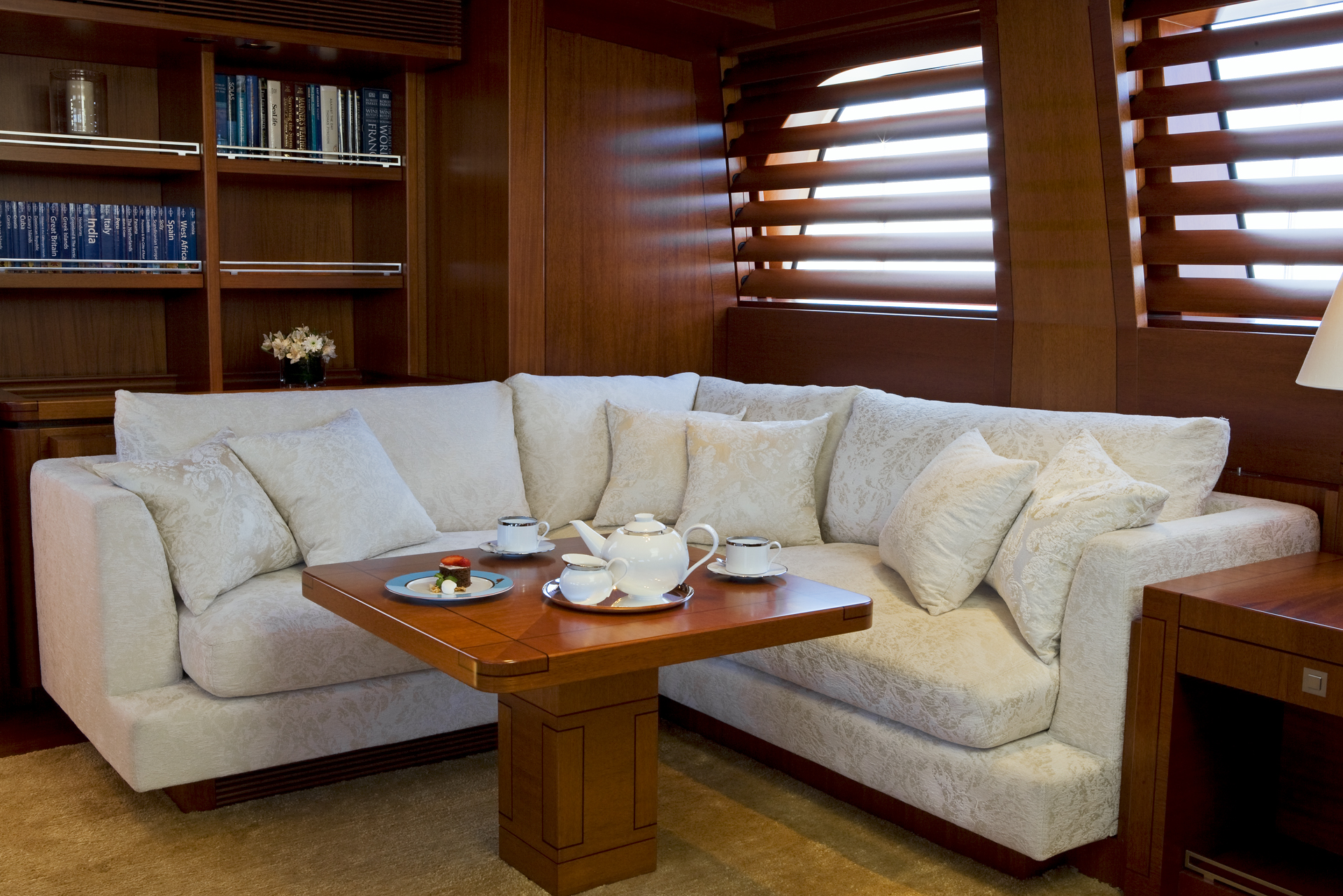
Living in an Ethereal World
To portside, a comfortable seating area is often used for reading or quiet conversation. To starboard, a full sized dining area for ten flows gracefully towards an impressive staircase beckoning access to the magnificently spacious lower salon where, on the port side, a 70” diagonal flat screen TV and surround sound system offers the ultimate in high-impact entertainment. To starboard, a beautifully appointed music den houses a digital piano and a delightfully-presented collection of wind and percussion instruments, drawing guests towards the prospect of late night music gatherings. The mellow ambience is enriched by exquisitely inlaid mahogany veneers and trimmed in textured organic fabrics or deep grained suede leather. Taking departure of this sumptuous retreat, access to the commodious and professionally-equipped galley is found through a door concealed by a unique ship’s model. Linked to a spacious crew mess and the bright, airy crew quarters, this forward area also provides direct access to the lower deck with its wine cellar, extra refrigeration and one of three engine room access points. Aft of the lower salon are the office, complete with full video-conferencing facilities, two large guest cabins and a third utility cabin that can be created by joining the office and the day head.
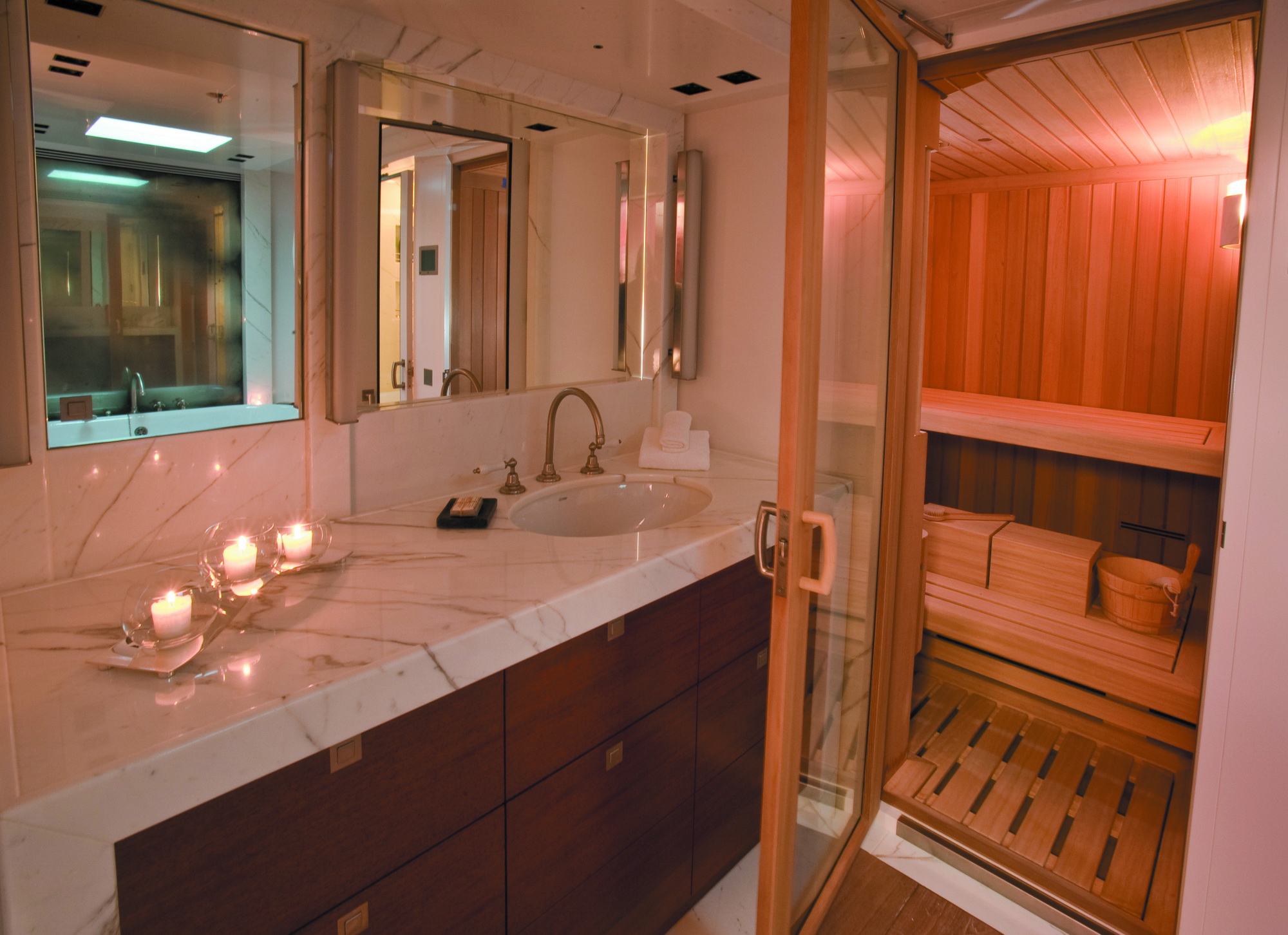
The full-beam owner’s suite is aft, complete with a large cedar lined sauna in the bathroom (Royal Huisman’s first, but unlikely to be its last); it enjoys the additional amenity of direct access to the privacy and seclusion of the aft cockpit and swim platform.
Perfecting the lifestyle…
Every superyacht offers exceptional lifestyle experiences but Ethereal’s unique technology takes these to a new level. It’s early morning in the tropics and time for a refreshing dip. You plunge over the side, enjoying a swim around the yacht breathing only the sea air – there are no exhaust gases, as the yacht is operating solely on her stored energy reserve of 400 kWh of lithium-iron phosphate batteries. All manner of household loads such as air conditioning and washing machines are effortlessly running on this reserve. Back on deck, anchors raised, you can’t help but be impressed as the mainsail is hoisted silently – by wireless remote so the crewman has optimum views of the process – and Ethereal has departed harbour and set sail in ‘stealth mode’ using her silent Hybrid propulsion system – yesterday’s late-arriving guests charge their own human batteries as they enjoy uninterrupted sleep.
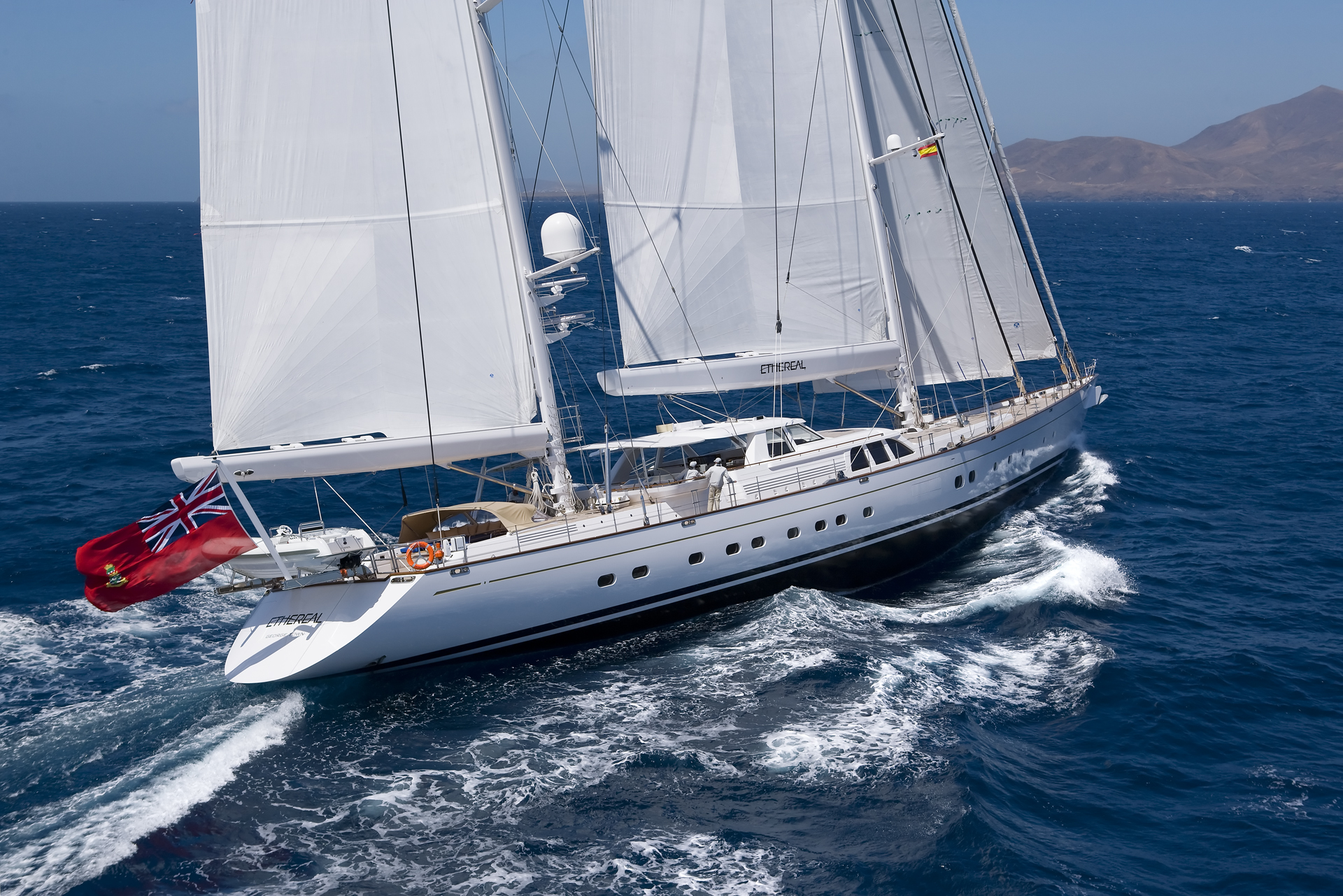
On passage to your evening anchorage, you take the push-button, hydraulically operated crow’s nest up the main mast for a stunning view of this powerful ketch under sail and the ocean around, when you spot a pod of whales. The captain navigates to the location, furls headsails, and selects “station-keeping mode” to maintain a computer-controlled geostationary position close to the whales via synchronized control of thrusters, engines and rudder. Everyone gathers to enjoy the show: for those below deck, Ethereal’s underwater video camera in the front of the keel puts camera lens to whale eye for close encounters of another kind.
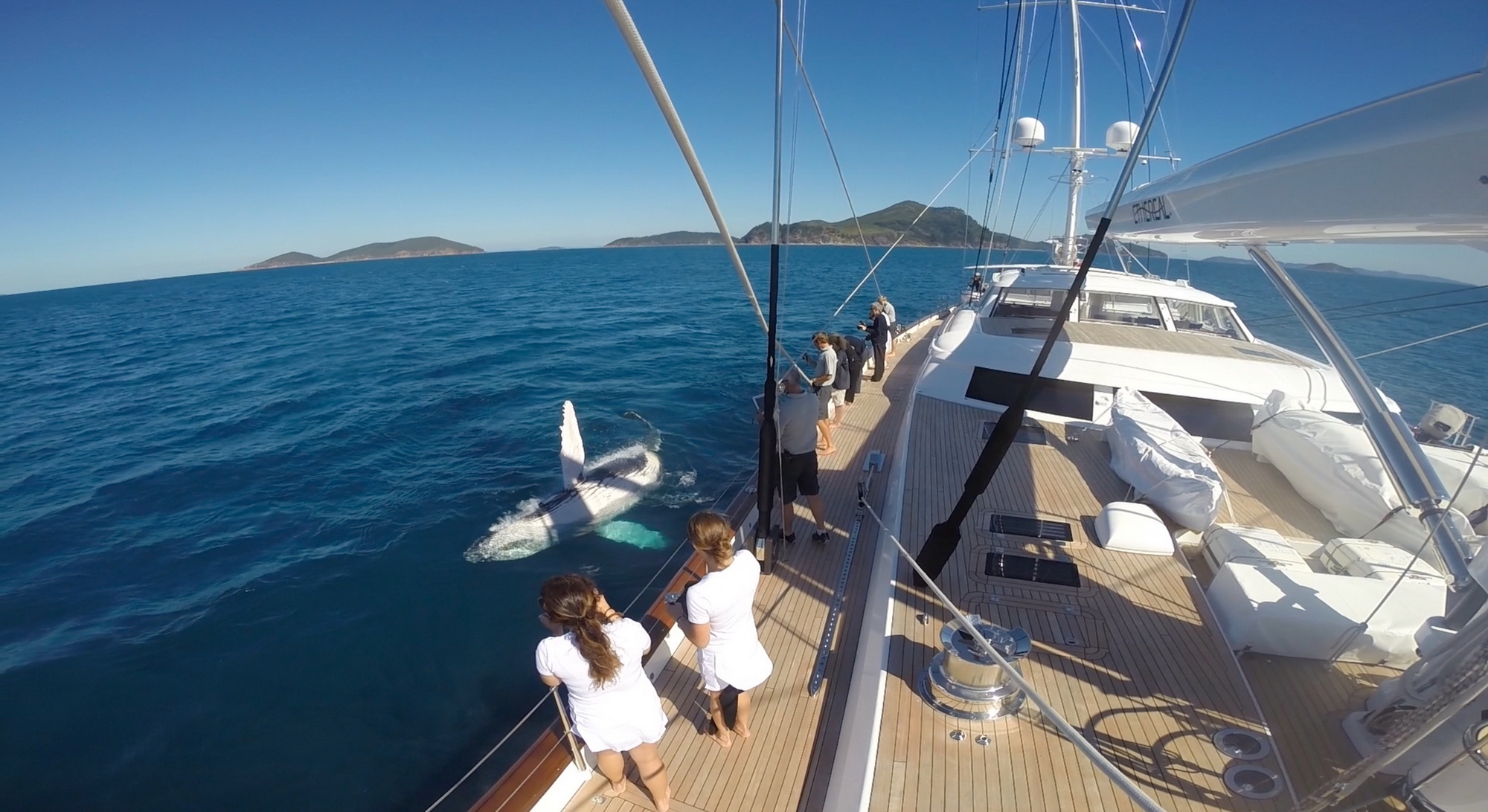
Approaching a secluded anchorage through reefs in strong afternoon sunlight is always a challenge. But not only does Ethereal’s captain have a man conning in the crow’s nest; the bank of ‘tru daylight’ LED back-lit screens collectively display chart, radar and systems monitoring consecutively at the helm, under the cover and security of the pilothouse, and even in guest cabins to provide the navigational information required with scarcely imaginable contrast and clarity – screens with ten times the daylight viewing power of a laptop in direct sunlight. Ethereal is easily manoeuvred into position to drop anchors thanks to joystick control of her twin engines and the innovative, retractable, hubless electric thrusters that provide the same silent and efficient power, to port or starboard. At anchor once more, the engineer can easily ensure peak loads are met without having to start a second generator – the #1 generator is complemented by the 400 kWh lithium-iron phosphate battery bank instead. Soon all is silent as owners and guests enjoy a perfect, peaceful dinner on deck, beneath the stars.
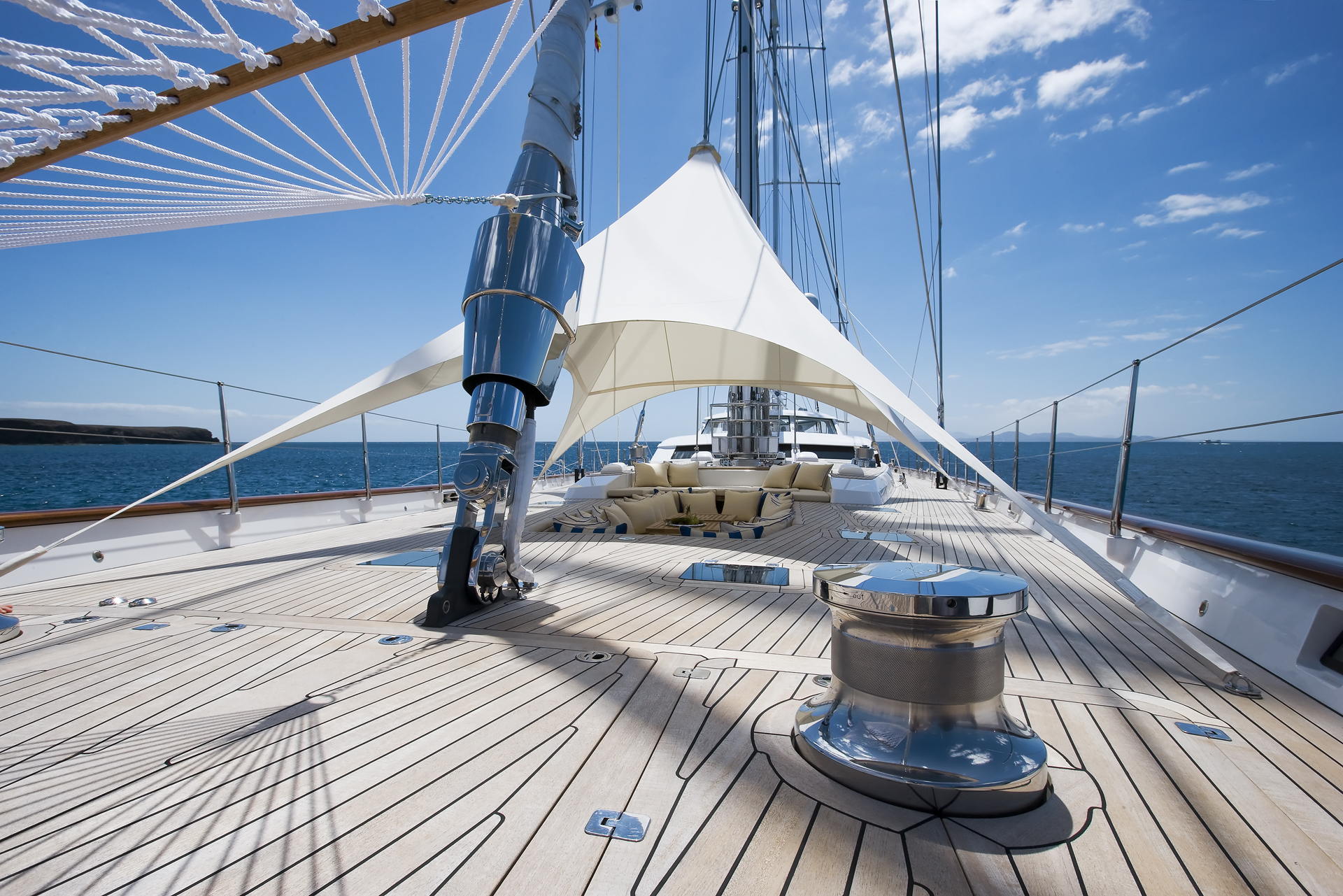
“Step below decks on Ethereal and you are immediately struck by the calm and quiet – the sheer tranquillity – no matter what is occurring operationally on the boat.”
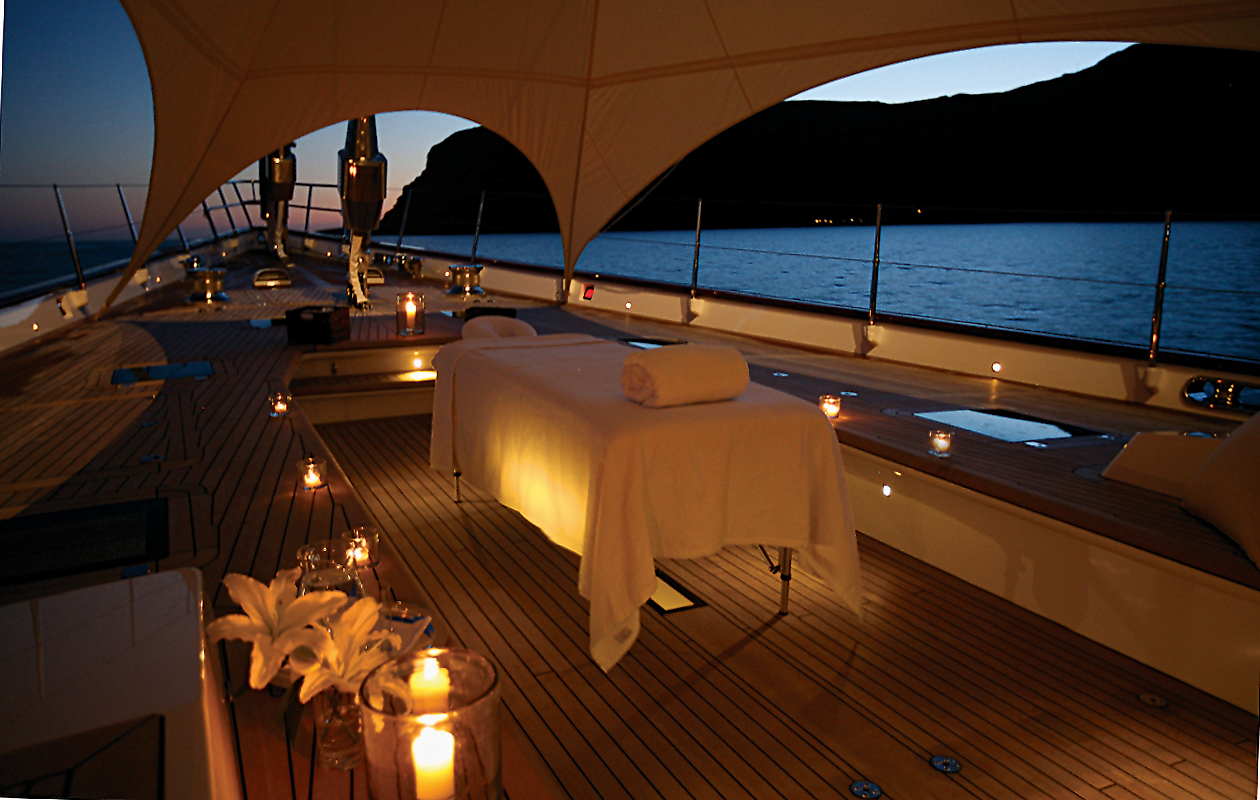
Sustainability3
Thanks to Ethereal’s energy efficiency she requires only 90kW generators rather than the 140kW expected on a yacht of this size – and, in general, she will only utilise one, and without resort to conventional, energy wasting load banks. In addition to greatly enhanced fuel economy, her hybrid propulsion system offers the engineer enormous operational flexibility including a highly innovative “get you home” propulsion system with the generators running the shaft-driven generator in reverse as an electric motor. Even the water-maker re-uses still pressurized discharge water to repressurize incoming water, saving some 4kW. Waste water heat from the generators is also put to good use, supplementing the air conditioning when in heating mode, and contributing to the fresh water heating and towel heaters. Air extracted from accommodation is re-used to pre-condition incoming fresh air. And there is much, much more…
Ethereal, the “private island”, has the resources and the technology to support her guests and crew in new-found standards of comfort, amenity and security, for extended operations, almost anywhere on the planet.
Considering that she also offers powerful sailing performance Ethereal is, by any measure, a truly remarkable yacht.
Much, much more...
Ethereal is packed with too many innovations, too many technical, lifestyle and energy-saving features to list here in full but, for those who enjoy the details, the selection below provides some indication of the lateral thinking and challenge to convention that has gone into this project:
- Ethereal incorporates redundant propulsion lines: only one propulsion line is needed when cruising. No additional generator is required to run as the hybrid drive train also generates sufficient electrical power for the board and household loads.
- Large VP propellors for improved efficiency; drag rotation of a propeller under sail can generate 20kW in return for 1.5 knots loss of speed.
- The main engines, unconventionally, are housed within purpose built sound shields to further reduce noise in the engine room and accommodations.
- The electrical system has been designed and laid out to provide the option to replace a generator with a fuel cell at a future date.
- Unusually for a yacht of its size, Ethereal has centrally ducted air conditioning rather than individual fancoils. A classic example of the benefits of 3D engineering, RH managed to conceal the ducts and air handlers within the technical spaces whilst respecting Pieter Beeldsnijder’s interior arrangement and styling.
- The yacht naturally has its own on-board telephone network, interfaced with satellite data and voice communication. In the middle of the ocean, guests can be seamlessly reached on their own mobile phones using their normal terrestrial based mobile number.
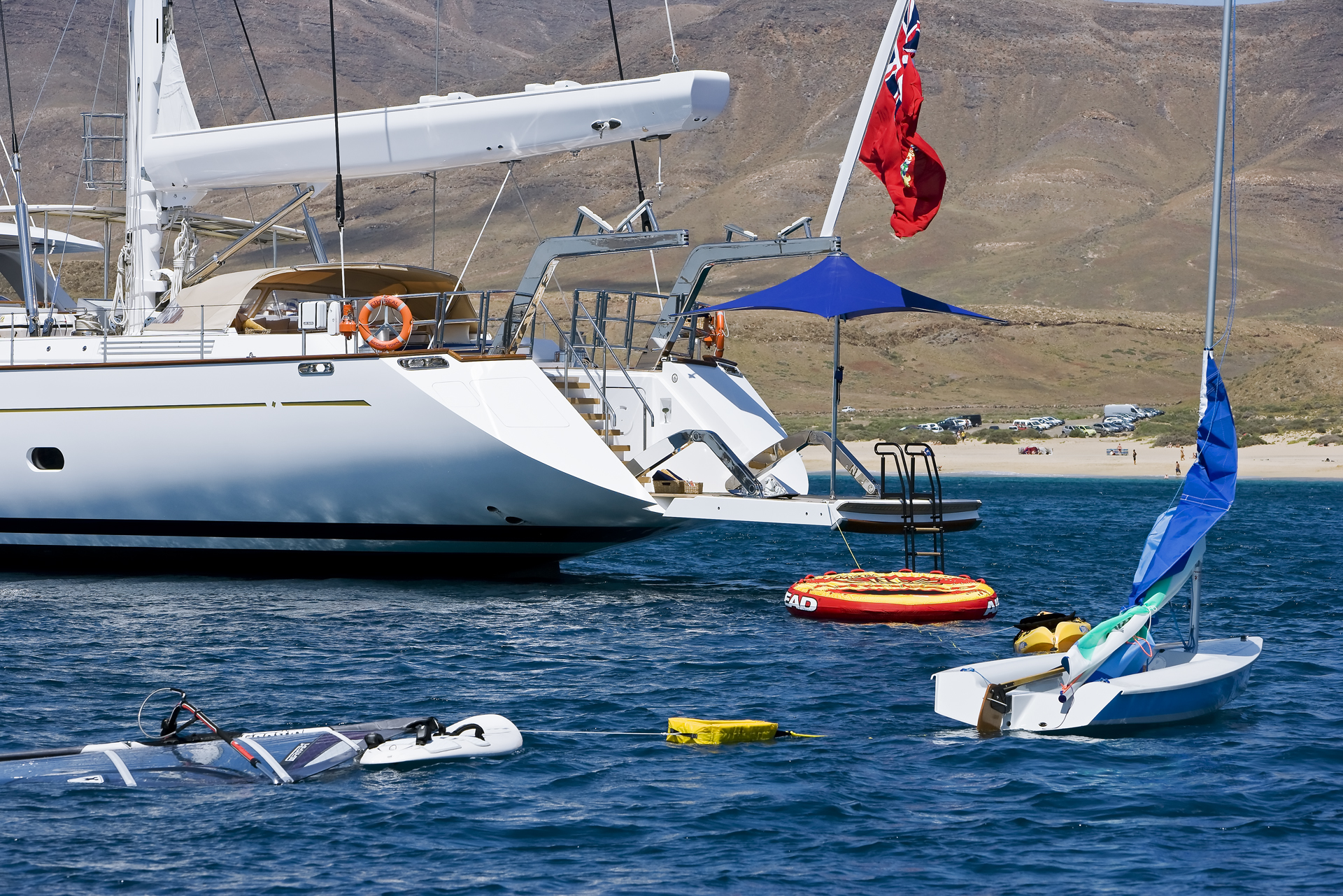
- All tenders, kayaks and sailboats can be position located from the mother ship – also a useful feature should a tender be stolen or accidentally set adrift. In addition, the locator system is hooked into the onboard charting system, enabling the depth detected under the tenders’ transmitted position to be transferred to Ethereal for extra navigational security when exploring new sailing grounds.
- The guest area provides a highly adaptable space for an office complete with video conferencing system. Together with the adjacent guest cabin it can convert to become a second VIP cabin similar to the owners cabin – an attractive feature for extended families or charter guests. Alternatively, the office can be converted into a fourth guest cabin, for which the day head (with full size shower) becomes the bathroom. The additional two guest cabins are doubles that are convertible to twins (and a third foldout). The owners’ bathroom has a full-size sauna.
- A professional diving board slides out effortlessly from the superstructure amidships.
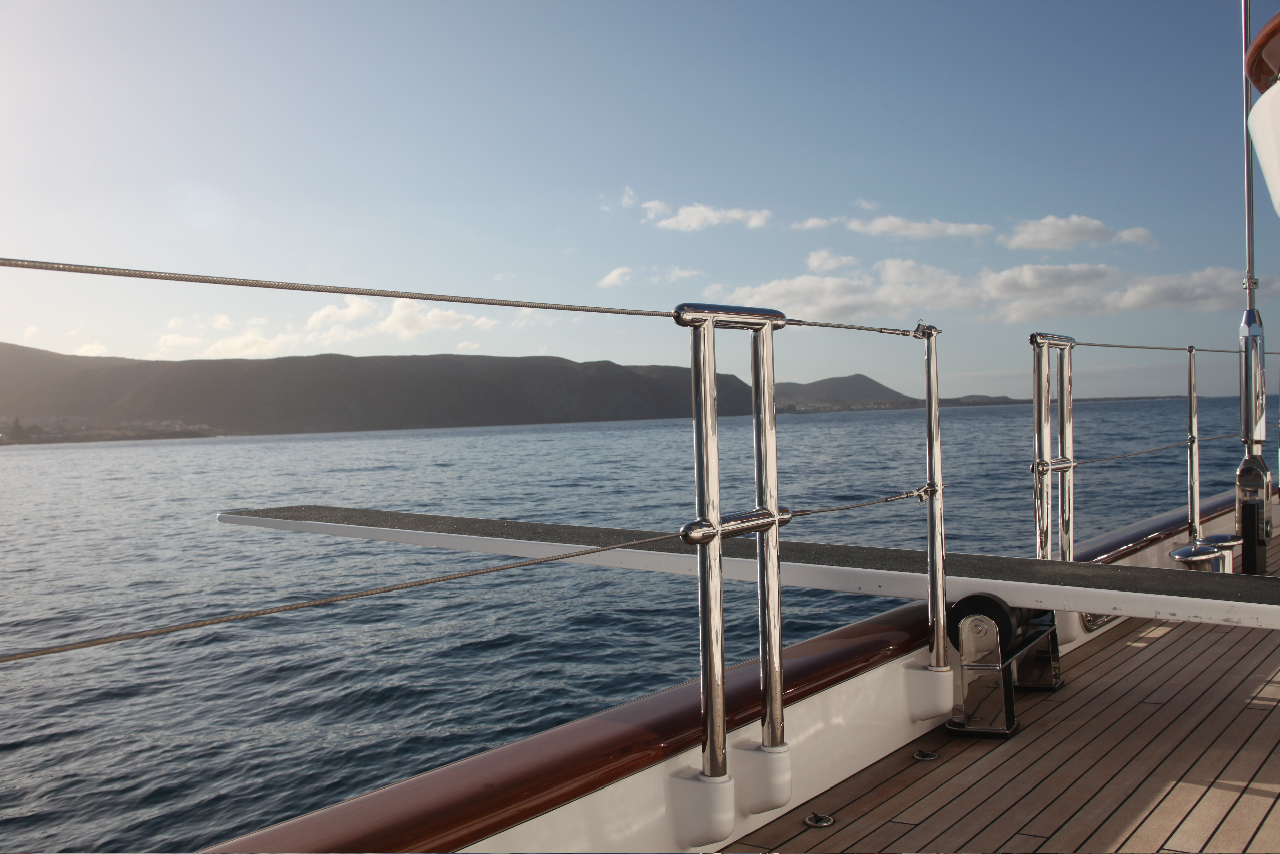
- Energy management is enhanced by on-the-spot cooling of heat generating equipment and by ducting ambient heat away from the accommodation.
- Keel design includes specially designed failsafe winglets either side of the bulb.
- An underwater camera with night light is located on the forward section of the keel.
- A live lobster locker with seawater circulation system is incorporated in the aft deck area to keep today’s catch fresh for tomorrow’s meal.
- Mast and deck lights are all based on LED technology.
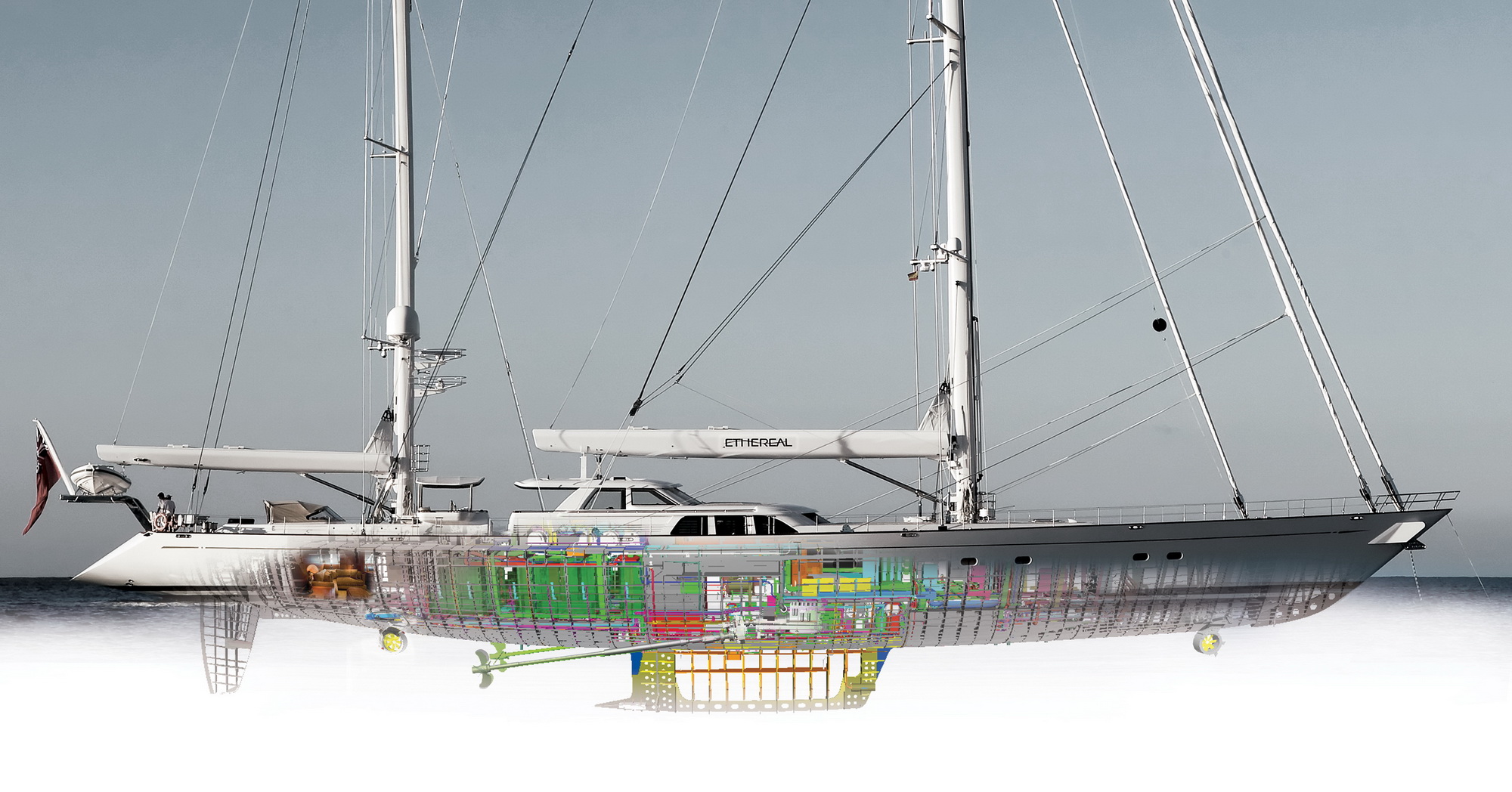
Ethereal: thinking (and engineering) outside the box
Nothing is impossible if you set your mind to it, so they say, and whilst it might be wise to accept that flying with personalised winged boots or travelling by time machine may best be left for future generations, the Royal Huisman team is only too keen to take on a challenge.
The shipyard’s designers, engineers and technicians are justifiably proud of their innovations and of their inventiveness. Over decades the team has challenged itself – and has been challenged by clients with ambitious new projects – to do things differently and better, and to do totally new things that have never been tried or achieved before.
There is rarely a “Eureka!” moment in this process – it is all about working as a team to address a challenge, drawing on the expertise of many disciplines in the yard and, often, expertise from other industries, to enrich the process in order to develop a potential solution. Long experience has shown that the first solution is rarely the best or the only one, so a process of evolution begins… and it never really ends. Why would it when there’s always the question “Could it be done even better?” Featured is an overview of just a few recent Royal Huisman innovations:
Integrated energy generation, storage and management
At the core of the Royal Huisman approach has been a completely fresh look at the cycle and usage of energy aboard a superyacht. A typical operating model has three core elements as set out below. A number of complementary innovations, also featured on these pages, contribute to overall effectiveness. Depending on owner’s preferences and the nature of the project, all these elements can be deployed and integrated in a number of different ways to achieve the desired outcome.
The hybrid propulsion system makes use of drive-shaft generators from the main engine(s) which, in conjunction with increased storage capacity from the lithium iron phosphate battery bank, can largely obviate the need for a generator to provide hotel services.
A simplified schematic of Ethereal’s hybrid propulsion system - All main elements generating (shaft generators + 2 main gensets + 1 emergency genset), consuming and storage energy:
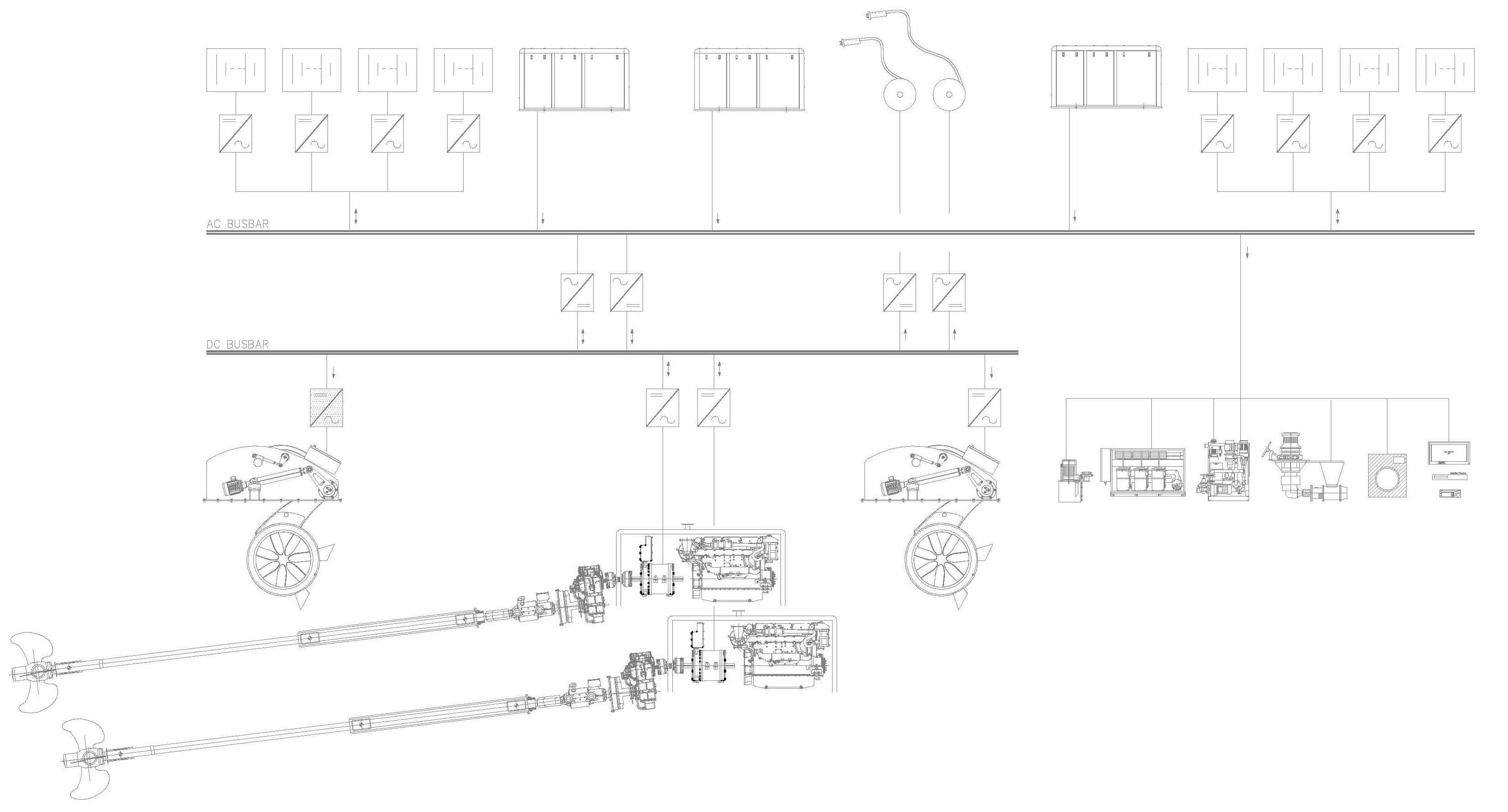
The lithium iron phosphate battery bank has double the storage cycle of conventional gel batteries and, when integrated for peak-demand energy storage, can complement the #1 genset, rather than running the #2 genset or incurring the inefficiency of a loadbank.
“Smart” operating procedures have been developed by the yard to allow crews to generate, monitor and deploy energy in the most efficient manner from a much more flexible range of sources to buffer the highs and lows of energy demand.
The benefits of Royal Huisman’s energy efficiency innovations include:
- Reduced fuel costs and CO2 emissions
- More flexible power storage and availability
- Extended operational sustainability
- Reduced Air conditioning requirements
- Weight savings (especially aloft)
- Cost savings on generator installations
- Space savings
- Reduced maintenance / downtime for conventional generators
- Enhanced long term value from a more technically advanced yacht
- Thermo insulated living areas
Advanced Insulation Techniques
Hull insulation is well established in the superyacht industry, but is generally a very blunt instrument, restricted to an inside hull coating. Royal Huisman separately and additionally cocoons the entire accommodation capsule against heat ingress from solar energy, sea temperature and equipment. It does so with new, highly-efficient materials, identified from extensive research into the practices of other industries such as refrigerated transport, that also offer natural rigidity and a sense of greater structural integrity due to their inherent sound absorbing characteristics.
Windows and hatches can be solarreflective and, if required, controllable in the degree of reflectivity against infra-red light. This reduces IR light penetration when the sun is high and strong, whilst increasing it (if required) when the sun is weaker. Internal temperatures remain much more stable, reducing air conditioning loads and increasing general atmospheric comfort.
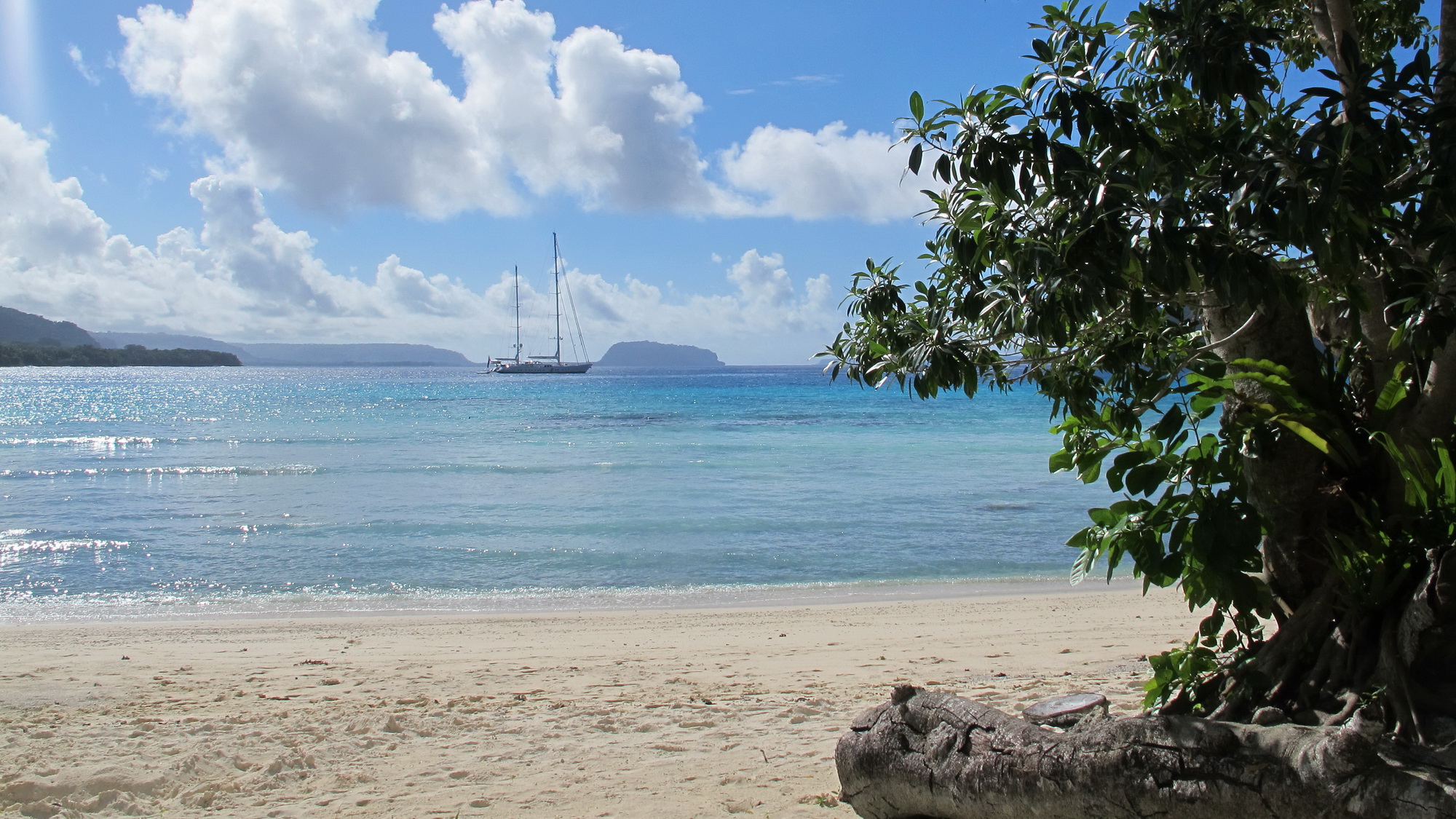
Reduced Heat Generation
If less heat is generated there will be less demand for air-conditioning and this is particularly important in the context of advanced insulation, which will retain internally-generated heat as well as excluding heat from external sources. The yard has developed a comprehensive array of measures to reduce heat-generation that include:
- LED lighting - it emits almost no infra-red light, so one of the greatest sources of unwanted internal heat is removed
- Smaller gensets with reduced operating time (resulting from the benefits of hybrid propulsion, energy storage / management systems, and the recycling of waste water heat)
- Infra-red reflective (light-switchable) glass for hatches and windows;
- Strategic ducting of heat emissions from domestic equipment such as fridges, freezers, ovens and washing machines
LED Lighting comes of age…
(Well, it has at Royal Huisman. Our recent developments in LED lighting are not yet available on the commercial market.)
One of the largest consumers of energy on a yacht is its domestic lighting. Incandescent bulbs are hugely inefficient, converting only 10% of the power consumed to light and 90% to heat. Royal Huisman engineers partnered with leading specialists to develop LED lighting systems that emulate the attractive, ambient light properties of incandescent light, yet consume only a fraction of the energy.
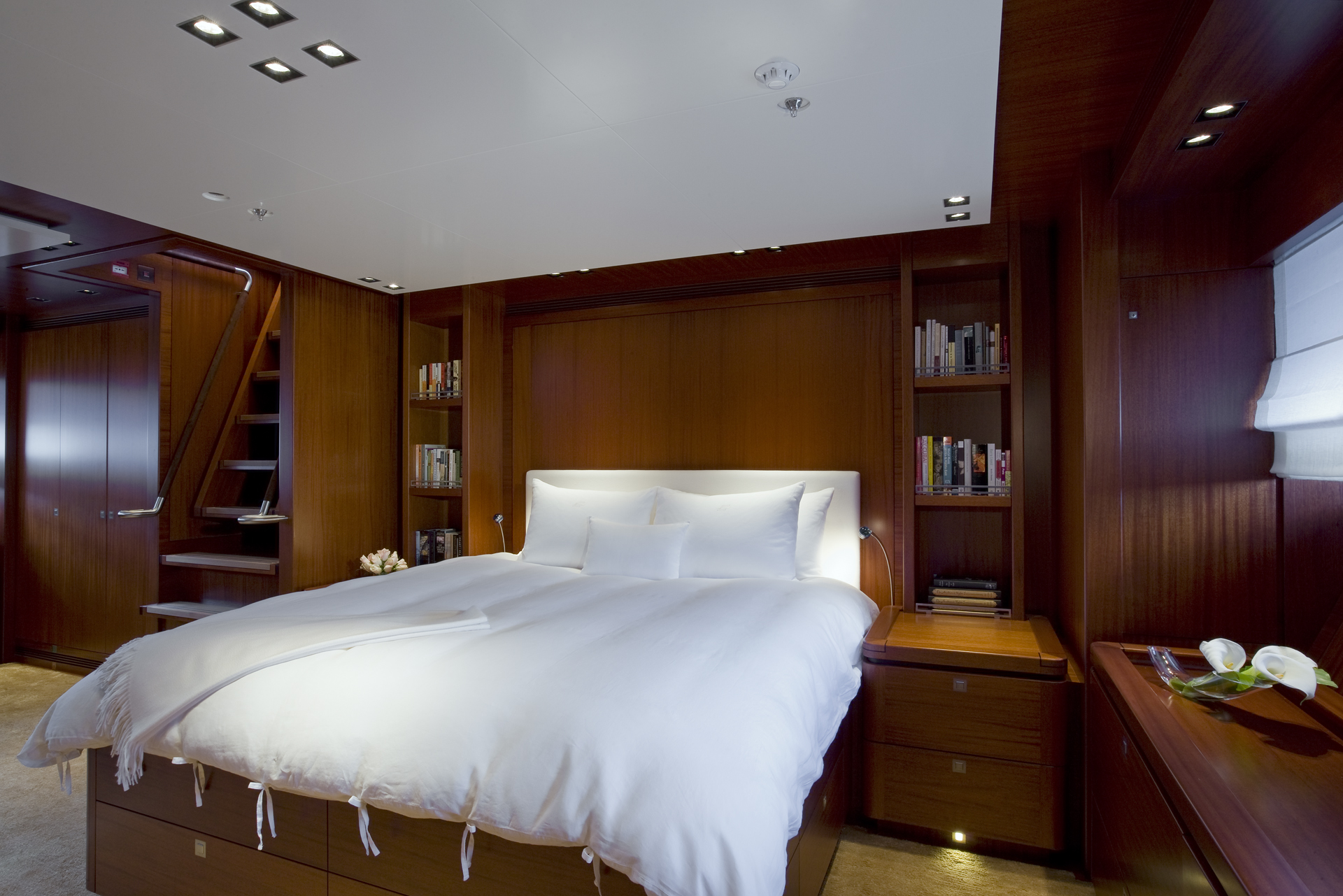
Further benefits include the near elimination of heat generation from the lighting; longevity and reduced maintenance (LED lights last 50 times longer than incandescent bulbs); and considerable weight-saving from lightweight LED cabling. LED lighting used aloft offers exceptional weight savings in the rig, because of the sheer quantity of cabling and light fittings to be found on the modern superyacht for both navigation and amenity; this results in improved righting moment and reduced ballast requirements.
Light switchable glass
One of the most important areas of a yacht from the perspective of energy efficiency, comfort and the preservation of interior finishes is the glass used in hatches and windows. Royal Huisman has taken a lead by working with specialists in light switchable glass to create hatches and windows incorporating technology that progressively filters or blocks infra-red and UV radiation. An electrochromic reaction in the coating between two glass sheets keeps cool air in and heat out and protect interiors from damage by UV light, yet offer clear transparency when required. Light filtration is controlled in five steps from clear to dark through a low voltage system accessible throughout the accommodation.
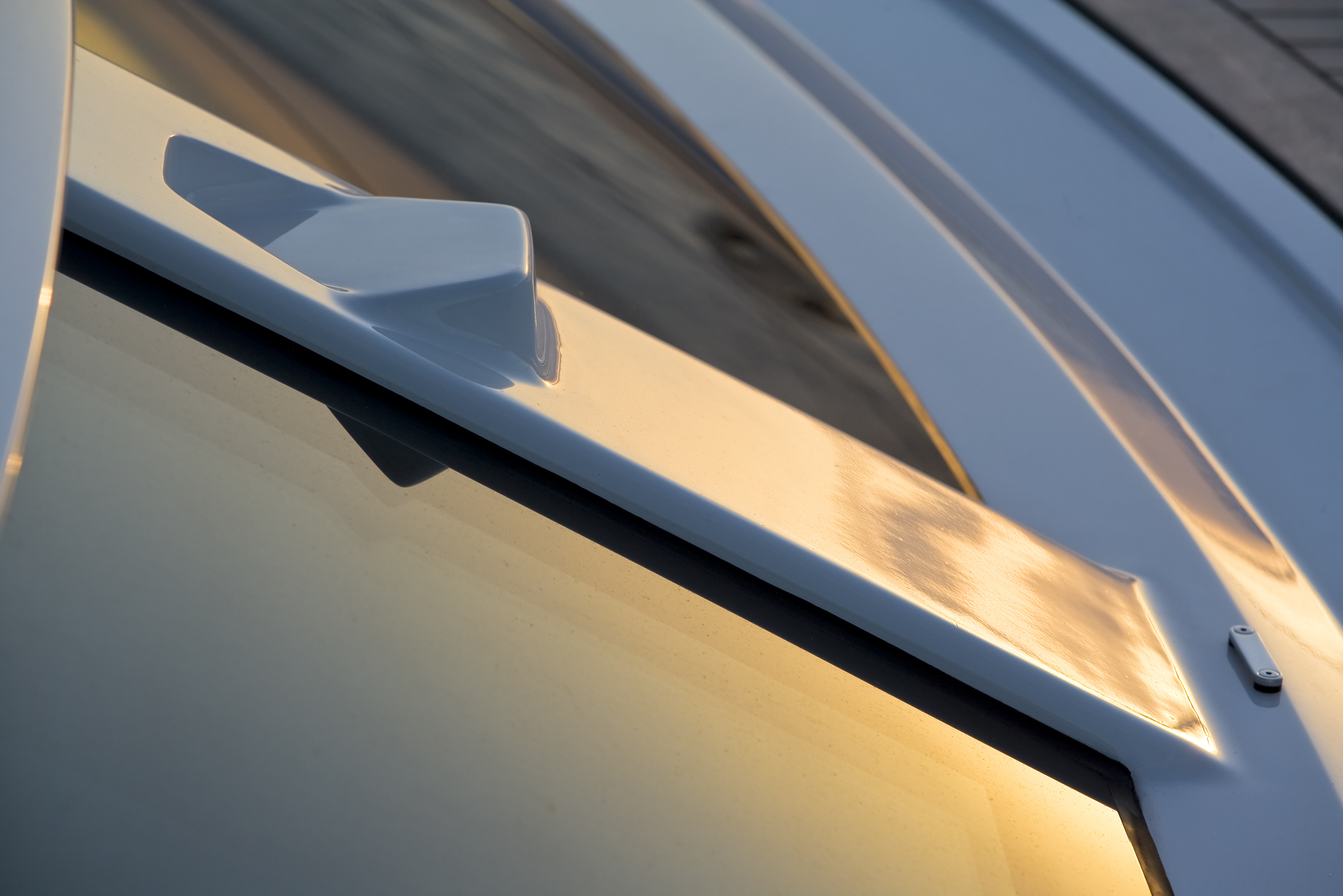
“Need to reduce Infra Red and UV light radiation at noon? Want to allow it back later? No problem: the glass can take care of it.”
To achieve these benefits Royal Huisman has developed a composite construction using profiled glass laminated with solar control film on the outer surface and light switchable glass internally. In every case a bespoke solution can be developed to meet the specific needs of the project. These structures have been subjected to rigorous high pressure tests in the presence of an engineer from Lloyd’s Register and demonstrated full integrity.
If you’d like to know more about current developments by the shipyard, please visit the innovation section.
